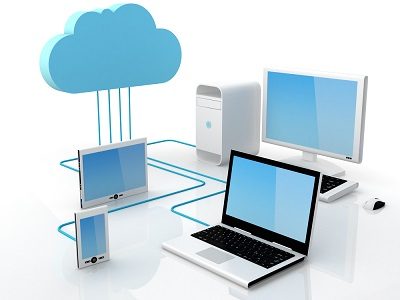
Over the last two years, there has been a sudden shift in the way businesses should provide and protect their network services. Companies had to abruptly deal with an already complex modern network while still supporting many remote employees. A working network is the backbone of any business, and through continuous monitoring, a network should ensure reliability, maximum staff performance, and robust security.
What is Network Infrastructure?
Let’s start with the basics. Your company’s network infrastructure includes all the hardware and software resources of your entire network. It includes devices like routers, switches, wifi, firewalls, and servers, each of which require careful configuration and maintenance.
- Your routers connect your private network to the internet.
- Switches and network cabling connect the devices in your private network like computers, printers, and more to allow them to communicate with each other.
- Wifi access points connect your laptops, tablets, and phones to the rest of the network.
- Firewalls protect your private network by controlling incoming and outgoing traffic to untrusted networks.
- Servers host applications, databases, and data files that get delivered to users through a network.
- And of course, there are all your PCs, printers, phones, and tablets. The best way to ensure that all of these are running efficiently is through proactive network monitoring.
What is Network Monitoring?
Network monitoring is the continuous analysis of a network to detect and correct any performance issues. Network monitoring involves collecting network statistics to determine the quality of services offered by the network. Continuous monitoring and review of your network include monitoring network hardware and software devices like routers, firewalls, switches, servers, and WiFi.
With the continuing pandemic causing many employees to work from home, it is vital to ensure your business network performs optimally. Remote network monitoring can ensure your network is not having performance issues and is secure enough for employees to access company resources.
How Can I Monitor My Network?
The first step in getting started with your network monitoring is to identify which devices need to be monitored. You’ll also want to decide on what performance metrics you’ll be measuring.
Here are some baseline metrics you’ll want to monitor:
 Bandwidth usage: You’ll want your network to be sending as much data as it can without being overloaded. Your network monitoring tool can identify how much bandwidth is typically used versus how much is currently being used.
Bandwidth usage: You’ll want your network to be sending as much data as it can without being overloaded. Your network monitoring tool can identify how much bandwidth is typically used versus how much is currently being used.- Throughput: This measures the percentage of data packets that are actually being sent.
- Latency: This is the time it takes between requesting data and receiving that data. Performance issues can be almost too small to recognize, so it’s important to have a monitoring tool in place.
- Packet loss: This is the number of data packets that are lost during data transmissions.
- Retransmission: This is a measure of how often data packets are lost and need to be retransmitted to complete a request for data.
- Network availability/Uptime: This lets you know if your network is currently available. Your network monitoring tools can alert you when the network goes down, and how often.
- Connectivity: You’ll want to make sure your network connection is operating at top performance at all times.
3 Benefits of Network Monitoring
Continuous monitoring of your network helps you to troubleshoot not just hard failures but slowdowns as well. Metrics such as throughput, latency, packet reordering, and jitters can be used to measure your network’s health.
Troubleshooting issues early ensures business continuity and fewer or no downtimes, including network monitoring benefits like:
1. Identifying Issues Anywhere in the Network
Network monitoring and assessment is a way to quickly locate a problem in the network. Monitoring your network’s performance can show you the cause and source of a network problem, where and when it occurred. It can also tell you who needs to fix it. When you actively monitor your network, you can detect any performance changes that could be problematic to users before they occur.
Network monitoring includes insuring your data is secure from outside attack or internal threats. What would happen if your company’s data was compromised? A network monitoring service can provide peace of mind that you are secure.
2. Better Use of IT Resources
IT teams are feeling more burnt out as a result of the increasing cybersecurity threats. With 72% of IT professionals having taken on new responsibilities since the outset of the pandemic, a network outage could be a productivity killer. For example, an under-resourced IT manager would be required to divert attention from one business critical project to another with little notice or preparation.
The tools in network monitoring systems reduce manual work for IT teams. This gives back valuable time to an IT team to instead allocate to more critical projects.
3. Providing Historical and Baseline Data
With the availability of baseline data, network monitoring tools can continually and automatically compare data. In case of performance degradation, an alert is sent to you, and you can immediately solve the problem. Historical data gives you a comparison point to determine optimal network performance or identify poor performance. It enables you to troubleshoot network problems of past events.
Why is Network Monitoring Important?
Network failure causes business disruptions. Businesses lose customers when such disruptions occur, causing huge losses and a decline in employee productivity. 33% of SMBs have lost revenue and customers due to downtime. Further research shows downtime causes a 21% decline in employee productivity.
Network monitoring helps to proactively solve network problems before they happen. Such solutions reduce downtime and help businesses to retain customers and improve employee productivity.
Adtek Advanced Technologies Network Monitoring Tools & Capabilities
If you don’t have the capabilities to monitor your network infrastructure yourself, outsourcing is a great option. At Adtek we provide network monitoring for today’s cyber security needs.
We can save your business time and money by eliminating the cost and complexity of traditional on-site network support and by mitigating outage-related downtime. We ensure unmatched visibility and efficiency to provide you with a reliable and secure network. Looking for more? Contact us today.
Adtek Advanced Technologies
Rock Hill, SC 29730
(803) 902-3111
Dillon, SC 29536
843-627-3079


No comments:
Post a Comment